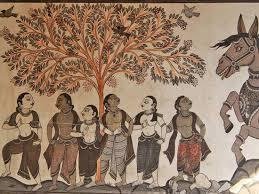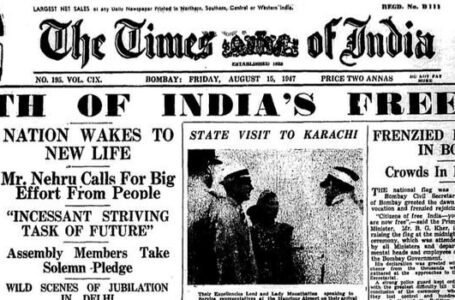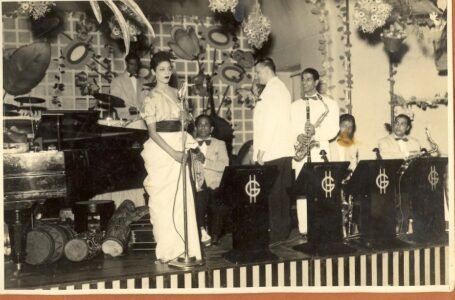Bhitti Chitra: The Ancient Temple Wall Paintings of Odisha

Odisha, located in the heart of Eastern India, has long been a hub of cultural and artistic richness, especially in the realm of religious art. The state’s temples, famous for their intricate architecture and spiritual significance, are also home to a lesser-known but once-thriving artistic tradition: Bhitti Chitra, or wall paintings. These beautiful murals once adorned the interiors of ancient temples in places like Puri and Konark, and often depicted religious and mythological themes.
The paintings are not just stunning works of art but also a reflection of Odisha’s deep religious roots and its tradition of visual storytelling. Unfortunately, today, only a few remnants of Bhitti Chitra remain, mostly in the temples of Konark, Puri, and scattered areas of the state. Despite the passage of time and the wear and tear of history, these surviving paintings still captivate scholars and art lovers alike for their beauty and historical importance. In this article, we explore the history, themes, artistic styles, and current state of Bhitti Chitra, and examine its role in shaping Odisha’s temple art and its lasting cultural legacy.
The history of Bhitti Chitra is closely tied to the development of temple art and architecture in Odisha, stretching back to the early centuries of the Common Era. Temples in Odisha, especially those dedicated to Hindu deities, have long been centers of both artistic innovation and religious devotion. The earliest known examples of temple wall paintings in the region date back to the 7th century, coinciding with the rise of the distinctive Kalinga architectural style.
During the reign of the Bhauma-Kara dynasty, between the 7th and 9th centuries, Odisha saw significant growth in both temple architecture and religious art. Temples built during this period, like those in Bhubaneswar, often featured wall paintings that illustrated key elements of Hindu mythology and religious symbolism. However, the golden age of Bhitti Chitra truly came during the Ganga dynasty, which ruled from the 11th to the 15th centuries. This period saw the creation of monumental temples such as the Jagannath Temple in Puri and the Sun Temple in Konark.
The Ganga rulers were avid patrons of both religion and art, and under their guidance, the walls of temples became vibrant canvases for a wide range of religious paintings. These works, often rich in color, decorated temples dedicated to deities like Vishnu, Shiva, and the Sun God. The subject matter of these paintings drew heavily from divine narratives in texts like the Puranas, the Mahabharata, and the Ramayana, as well as local legends and folklore.
By the 16th century, however, the rise of Mughal influence across India, including Odisha, marked a decline in the practice of temple wall painting. The advent of Islamic iconoclasm, which discouraged the depiction of human and divine figures, likely played a role in reducing the production of these paintings. Combined with the effects of Odisha’s humid climate and the inevitable passage of time, many of these delicate artworks faded or were lost. Today, only fragments of Bhitti Chitra remain scattered across the temples of Odisha.
Bhitti Chitra in Odisha primarily revolves around religious and mythological themes, deeply influenced by the spiritual beliefs and practices of the time. The content of these paintings draws largely from Hindu religious texts, rituals, and the region’s local traditions. Some of the most prominent themes in Bhitti Chitra include:
- Deity Worship and Iconography
One of the central motifs in Bhitti Chitra is the portrayal of gods, goddesses, and their divine avatars. Temples dedicated to deities like Vishnu, Shiva, and the Sun God were particularly rich in these depictions. For example, in the Jagannath Temple in Puri, the paintings often featured Lord Jagannath along with his siblings, Balabhadra and Subhadra, along with scenes from their mythological stories. These murals weren’t just decorative; they held a ritualistic significance, believed to aid in the spiritual elevation of the worshippers.
The Sun Temple in Konark, one of Odisha’s most iconic landmarks, also displayed paintings that told the tales of Surya, the Sun God. These works frequently depicted Surya’s chariot being drawn by seven horses—a powerful image echoed throughout the temple’s sculptures and architecture.
- Mythological Narratives
Bhitti Chitra also brought to life stories from the great epics, the Mahabharata and Ramayana, on the temple walls. Scenes from the lives of Rama, Sita, and their companions, as well as the epic battles of the Mahabharata, were commonly portrayed. These paintings were often arranged in a narrative sequence, allowing worshippers to engage visually with the stories of righteousness (dharma) and unrighteousness (adharma).
The exile of Rama, the abduction of Sita by Ravana, and Rama’s eventual victory over the demon king were recurring scenes in these murals. The Mahabharata, with its complex characters and epic plotlines, was also a significant source of inspiration. The legendary Kurukshetra war, the teachings of the Bhagavad Gita, and the heroic actions of the Pandavas were vividly depicted in these colorful works.
- Religious Rituals and Festivals
These paintings also captured the religious festivals and rituals that were central to the cultural fabric of Odisha. One of the most iconic representations was of the Rath Yatra, the grand chariot festival of Lord Jagannath in Puri, one of the largest and most important religious events in India. The paintings that depicted the festival, with its chariots, devotees, and deities, acted as a visual record of the vibrant energy and significance of Odisha’s religious life.
In addition to the Rath Yatra, other rituals, such as the worship of lunar and solar deities, also found expression in Bhitti Chitra. The Sun Temple in Konark, for example, contained paintings that depicted the worship of the Sun during key solar festivals, such as Makar Sankranti.
- Symbolism and Allegory
Bhitti Chitra often carried deep symbolic meanings, using divine figures, animals, and natural elements to convey spiritual teachings. The paintings frequently explored complex concepts from Hindu philosophy, such as moksha (liberation), dharma (duty), and karma (action). Deities were portrayed in dynamic poses, symbolizing their strength and benevolence, while animals, plants, and geometric patterns often served as metaphors for divine qualities and deeper spiritual truths.
In these ways, Bhitti Chitra not only served as an aesthetic enhancement to the temples but also functioned as a visual guide to the spiritual and philosophical concepts that shaped the lives of devotees.
The technique and style of Bhitti Chitra wall paintings were shaped by several factors, including Odisha’s natural environment, the architectural styles of its temples, and the region’s long-standing artistic traditions. The colors used in these paintings were sourced from natural pigments derived from minerals, plants, and stones. These pigments were then mixed with binders like lime and gum, creating durable shades that could endure over time, despite the challenges posed by climate and wear.
The overall style of Bhitti Chitra followed the classical temple art traditions of Odisha, characterized by the use of bright, vibrant colors and an attention to detail. The figures of gods, goddesses, and mythological beings were carefully crafted with a focus on symmetry and balance, in line with the iconographic rules outlined in ancient Hindu texts.
The architectural design of the temples also played a crucial role in the layout of these wall paintings. Often, the artwork was designed to complement the physical structure of the temples, following the curves of the walls, ceilings, and pillars. In some cases, the paintings adorned the interior walls, while the exterior walls showcased sculptural representations of religious themes, creating a harmonious blend of visual art and architecture.
Bhitti Chitra, the ancient wall paintings found in Odisha’s temples, are among the most fascinating and important aspects of the state’s cultural heritage. Through their vivid portrayal of religious stories and mythological themes, these paintings offer a unique glimpse into the spiritual and artistic life of ancient Odisha. While many of these masterpieces have faded or been lost over time, the surviving fragments still inspire awe, standing as a powerful testament to the artistic skill and deep religious devotion that once flourished within the sacred spaces of the temples. As ongoing conservation efforts seek to preserve these remarkable works, there is hope that future generations will once again come to appreciate the beauty and cultural significance of Bhitti Chitra.


